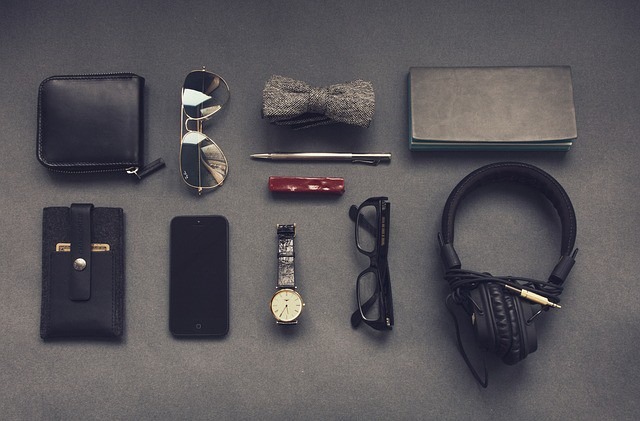Have you ever wondered how some people always look perfectly put-together, even in the simplest outfits? Often, the secret lies not just in their clothes, but in the accessories they choose. Accessories are like the punctuation marks of your outfit; they complete the sentence, add emphasis, and express your personality. Mastering the art of accessorizing can transform even the most basic jeans and a t-shirt into a stylish statement.
This guide will break down everything you need to know about accessories, from understanding different types to learning the golden rules of styling them for any occasion.
Why Do Accessories Matter So Much?
Accessories are more than just add-ons; they are powerful tools in your fashion arsenal:
- Elevate an Outfit: A simple dress can look entirely different with the right necklace, scarf, or belt.
- Express Your Personality: Accessories are a fantastic way to showcase your unique style, interests, and mood without saying a word.
- Add Color and Texture: They can introduce new hues or interesting textures to an otherwise plain outfit, making it more dynamic.
- Create Focus: A statement necklace or a bold pair of earrings can draw attention to your face or décolletage.
- Transition Looks: The same dress can go from a casual day out to an elegant evening event just by swapping out accessories.
- Update Your Wardrobe: Instead of buying new clothes every season, new accessories can give your existing pieces a fresh, current feel.
The Essential Categories of Accessories
To master accessorizing, it helps to know the main types you’ll be working with:
- Jewelry: This is a vast category including necklaces, earrings, bracelets, rings, watches, and brooches.
- Subtle/Everyday: Delicate chains, stud earrings, simple rings.
- Statement: Chunky necklaces, chandelier earrings, bold cuffs.
- Bags: More than just carrying essentials, bags are major style statements.
- Everyday: Totes, shoulder bags, crossbody bags.
- Evening/Special Occasion: Clutches, mini bags, embellished bags.
- Work: Structured totes, briefcases.
- Scarves: Incredibly versatile, they can be worn around the neck, in the hair, on a bag, or even as a top.
- Silk/Satin: Elegant, colorful, often patterned.
- Wool/Cashmere: Warm, cozy, textural.
- Cotton/Linen: Lightweight, breathable for warmer weather.
- Belts: Define your waist, add polish, or introduce a pop of color.
- Thin: Subtle, elegant, for cinching dresses or blazers.
- Wide/Statement: For making a bold fashion statement, often over dresses or tunics.
- Classic: Leather belts for trousers or jeans.
- Shoes: The foundation of your outfit, setting the tone for the entire look.
- Casual: Sneakers, flats, sandals.
- Formal: Heels, dress shoes, polished loafers.
- Boots: Ankle boots, knee-high boots, over-the-knee boots for various seasons and styles.
- Hats: Practical for weather and fantastic for style.
- Baseball caps: Casual, sporty.
- Fedora/Panama hats: Stylish, adds flair.
- Beanies: Warm, casual.
- Eyewear: Both functional and fashionable.
- Sunglasses: Protect eyes, add cool factor.
- Prescription glasses: Frame your face, express personality.
The Golden Rules of Accessorizing
Now that you know the players, let’s learn how to play the game effectively:
- Balance is Key (The “Rule of Three-ish”): Don’t overdo it. Instead of wearing every accessory you own, choose a few key pieces. A common guideline is to pick 2-3 significant accessories. For example, a statement necklace or statement earrings, not both. Then add a bracelet and/or a ring. The goal is to complement, not clutter.
- Consider Proportion:
- Your Body: If you have a petite frame, avoid overly chunky or massive accessories that might overwhelm you. Taller individuals can carry off larger pieces more easily.
- Your Outfit: A delicate necklace might get lost on a busy, patterned top. A chunky necklace would be better suited to a simple, solid-colored top.
- Necklines: Choose necklaces that complement your neckline. A choker works well with a high neck, while a longer pendant can highlight a V-neck.
- Think Color and Texture:
- Complementary Colors: Use the color wheel to pick accessories that complement your outfit. For example, an orange scarf with a blue dress.
- Pops of Color: A neutral outfit can be instantly brightened with a vibrant colored bag or shoes.
- Mixing Textures: Combine different textures for visual interest. A silk scarf with a chunky knit sweater, or a leather belt with a tweed skirt.
- Dress for the Occasion:
- Casual: Stick to relaxed and comfortable accessories like sneakers, crossbody bags, and simple jewelry.
- Work/Professional: Opt for classic, understated pieces that convey professionalism, such as a structured handbag, a classic watch, and delicate jewelry.
- Formal/Evening: This is where you can bring out the sparkle! Clutches, statement jewelry, and elegant heels are perfect.
- Reflect Your Personal Style:
- Don’t follow trends blindly. If a trend doesn’t feel authentic to you, skip it.
- Invest in pieces you genuinely love and that make you feel good.
- Experiment! The best way to find your unique accessorizing style is to try different combinations.
Accessorizing for Different Outfits
Let’s apply these rules to common outfit types:
- Jeans and a T-shirt: This is your blank canvas!
- Elevate: Add a statement belt, a long layered necklace, and a stylish pair of ankle boots.
- Casual cool: Sneakers, a baseball cap, and a cross-body bag.
- Chic: Ballet flats, a delicate scarf tied around your neck, and simple stud earrings.
- The Little Black Dress (LBD):
- Classic Elegance: Pearls, a small clutch, and classic pumps.
- Modern Edge: Chunky silver jewelry, a metallic clutch, and edgy heeled boots.
- Pop of Color: A vibrant colored scarf, matching clutch, and pumps.
- White Button-Down Shirt and Trousers:
- Professional: A structured tote bag, a classic watch, and delicate gold earrings.
- Relaxed Chic: Untuck the shirt, add a wide-brimmed hat, comfortable sandals, and a straw tote bag.
- Artistic: A bold, sculptural necklace, layered rings, and unique loafers.
- Sweater and Skirt:
- Cozy & Chic: A long pendant necklace over the sweater, a thin belt to cinch the waist (if desired), and knee-high boots.
- Playful: A printed scarf tied in your hair, colorful ankle boots, and quirky earrings.
Common Accessorizing Mistakes to Avoid
- Too Much of Everything: The biggest mistake is piling on too many accessories, which makes an outfit look cluttered rather than curated.
- Ignoring Proportion: Wearing tiny earrings with a huge necklace, or a massive bag with a delicate outfit.
- Mismatching Styles: Pairing overly casual accessories with a very formal outfit, or vice versa (unless it’s a deliberate, stylish contrast).
- Forgetting Practicality: Choosing uncomfortable shoes or a bag that’s too heavy for daily use.
- Neglecting the “Third Piece”: Often, an outfit feels complete when you add a “third piece” that isn’t essential clothing, like a scarf, a vest, a jacket, or a statement necklace.
- Forgetting to Clean/Maintain: Scuffed shoes, tarnished jewelry, or dirty bags detract from your overall look.
Building Your Accessory Collection
You don’t need to spend a fortune to build a great accessory collection. Start with versatile pieces and gradually add more specific items:
- Start with Neutrals: Black, white, brown, tan, and metallics (gold and silver) are your best friends.
- Invest in Classics: A classic watch, a good quality leather belt, and versatile stud earrings will serve you for years.
- Add Pops of Color/Pattern: Once your neutral foundation is solid, introduce accessories in your favorite colors or interesting patterns.
- Consider Your Lifestyle: If you walk a lot, prioritize comfortable and stylish sneakers or flats. If you attend many formal events, a versatile clutch is a good investment.
- Shop Smart: Look for sales, thrift stores, and smaller boutiques for unique finds.
Conclusion: Your Style, Your Story
Mastering the art of accessorizing is a journey of self-discovery and creativity. It’s about understanding the power of small details to transform an entire look and express your unique personality. By focusing on balance, proportion, color, and occasion, and by building a versatile collection of pieces you love, you can elevate your style effortlessly every single day. So, go ahead, experiment, have fun, and let your accessories tell your fashion story!


